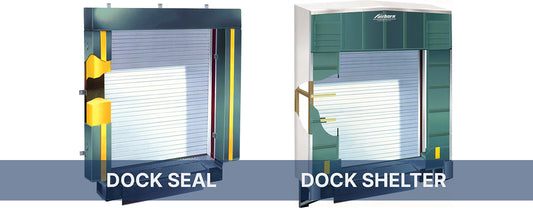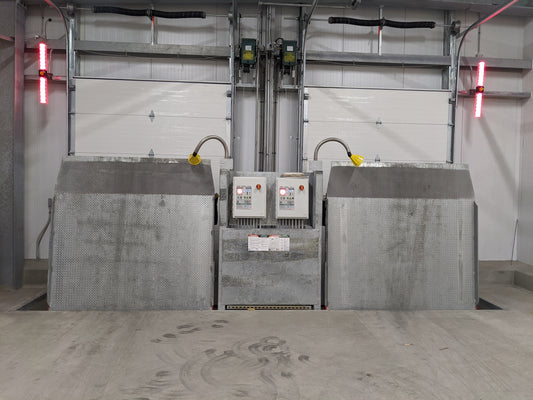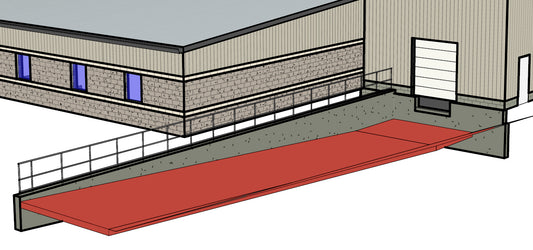A dock leveler hold-down (also referred to as a ramp control) are the component of a pull-chain dock leveler that keeps the deck from rising under constant pressure from the lifting springs. Two common components of a typical hold-down are the ratchet bar with pawl and the hold-down body.
Integrated with the hold-down body is a pawl that acts to grab the teeth of the ratch bar and keep the dock leveler deck in-place. When you pull the release chain on a mechanical dock leveler, the chain separates the pawl from the ratchet bar, allowing the deck to float up.
As you walk the deck of the leveler down onto a trailer bed, the pawl and ratchet bar teeth slide past each other to lock the deck in-place. Over time, the teeth on the ratchet bar and pawl wear out, requiring a replacement.
"Auto Release" Hold-Down
Within a typical hold-down body is a compression spring that relieves tension on the hold-down from trailers with air ride suspensions that place upward pressure on the deck as the leveler ratchets down.

Many hold-downs are equipped with an auto release mechanism to pull on the release arm as the bottom protrudes out from the body. Enough separation causes the release of the pawl from the ratchet bar, allowing the hold-down to reset and relieve the pressure. This helps to prevent the assembly from breaking apart. This is commonly referred to as "Auto Release".
If you are buying an aftermarket solution, be sure your hold-down is equipped with "Auto Release" (AR for short). Always follow manufacture guidelines and recommended replacement parts when replacing components on your loading dock equipment.
Ratchet Bars
A ratchet bar is a component of a hold-down assembly that pairs with the pawl on a typical hold-down body. The ratchet bar slides through the body and makes contact with the pawl to lock the deck down as it "ratchets" down. Over time, these components wear out with the sliding motion past the pawl teeth and are subject to replacement. They are manufacture and hold-down specific, with teeth lengths and patterns varying based on manufacture make and model. Consult your equipment User Manual for more information.




